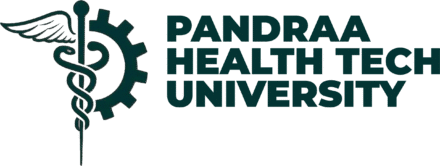The Rise of Allied Health Careers: Where Associate Degrees Lead to Purpose
Healthcare is changing. Hospitals, clinics, and public health systems don’t only run on doctors — they rely on a vast workforce of allied health professionals: laboratory technicians, radiology specialists, dialysis technologists, and countless others who form the invisible backbone of care.
What’s surprising to many students and parents is this: most of these careers don’t require a decade-long medical degree. Instead, an Associate degree can open doors to jobs that are meaningful, respected, and increasingly in demand worldwide.
This article breaks down why Allied Health careers are rising and how Associate programs create not just employment, but purpose-driven opportunities.
1. Understanding the Allied Health Revolution
Allied health covers more than 80 unique professions outside of nursing and medicine. Think of it as the support structure of the healthcare system:
- Clinical laboratory scientists
- Radiology and imaging technologists
- Physical therapy assistants
- Respiratory care specialists
- Medical office administrators
- Phlebotomists and dialysis technicians
These professionals:
- Diagnose illnesses.
- Run diagnostic imaging and lab reports.
- Provide therapy and rehabilitation.
- Manage patient records and data.
Without them, hospitals stop functioning. With global health systems under pressure, the demand for allied health workers is skyrocketing.
2. Why the Demand is Exploding
There are four big drivers behind the demand for allied health professionals:
- Aging Populations
- The world’s population is living longer.
- Chronic diseases like diabetes, heart conditions, and respiratory issues need constant monitoring and lab work, which is often handled by allied health professionals.
- Workforce Shortages in Healthcare
- WHO projects a global shortage of 10 million health workers by 2030.
- Doctors and nurses alone cannot fill this gap — allied roles are essential.
- Cost-Efficient Healthcare Delivery
- Health systems are shifting tasks to allied workers to reduce costs without reducing quality.
- A physician might order a diagnostic test, but it’s the allied professional who performs and interprets the data.
- Technological Advancements
- Modern healthcare relies on advanced imaging, simulation, and diagnostics.
- Technicians and technologists trained on this equipment are becoming indispensable.
3. The Associate Degree Advantage
Many parents assume that only long, expensive degrees guarantee success. But here’s the reality:
- Duration: Most Associate programs run 2 years (some 18 months accelerated).
- Cost: Typically 1/3rd the tuition of a full Bachelor’s or MD program.
- ROI: Graduates can enter the workforce quickly — often earning $35,000–$55,000 annually as a starting salary (U.S. averages).
- Licensing Ready: Many Associate programs are aligned with certification boards, so graduates can practice right away.
In short: faster entry, lower cost, practical readiness.
4. Careers You Can Start With an Associate Degree
Here are 10 allied health careers that only need an Associate degree, each offering both stability and purpose:
- Clinical Laboratory Technician
- Run blood tests, cultures, and diagnostics.
- Critical in diagnosing everything from infections to cancer.
- Radiology Technologist
- Operate X-rays, CT scans, MRI machines.
- Increasing demand with global expansion of diagnostic imaging.
- Respiratory Therapist (Associate level in many regions)
- Treat patients with asthma, COPD, and post-surgical respiratory issues.
- Physical Therapist Assistant
- Support rehab for accident victims, stroke survivors, and athletes.
- Dental Hygienist
- Handle cleanings, screenings, and preventive oral care.
- Medical Laboratory Assistant
- Prepare specimens, maintain lab processes, and support clinical research.
- Occupational Therapy Assistant
- Help patients regain everyday functional skills.
- Cardiovascular Technician
- Specialize in ECGs, echocardiograms, and cardiovascular imaging.
- Phlebotomist
- Collect and process blood samples, a backbone for all labs.
- Medical Office Administrator
- Manage the frontlines of clinics: scheduling, billing, and patient coordination.
Each role connects directly to patient care — purpose with pay.
5. The Purpose Factor: Why Students Choose Allied Health
Unlike many “jobs for stability,” allied health careers attract students because of purpose alignment:
- Direct Impact: Every test run, every therapy session, every scan performed changes lives.
- Global Need: Careers are portable — graduates can work across borders.
- Equity Role: Many underserved regions lack physicians, making allied professionals frontline providers.
This is not just about a career. It’s about joining a workforce that matters everywhere.
6. Why Parents Should Pay Attention
Parents often ask: “Will my child have a secure future?” With allied health, the answer is backed by data:
- Job Security: U.S. Bureau of Labor Statistics projects 13% growth in allied fields by 2031 — much faster than average.
- Mobility: With the right certifications, professionals can move across countries.
- Pathways: An Associate is not the end — students can ladder into Bachelor’s or even MD programs later.
For families, allied health offers a low-risk, high-opportunity pathway.
7. The Global Perspective
Allied health careers are not a U.S. trend — they are global:
- Caribbean: Hospitals need lab techs, radiologists, and community care professionals immediately.
- Africa: Task-shifting models depend on allied health to cover physician shortages.
- Asia: Growing middle-class populations demand better diagnostic and preventive care.
For international students, Associate programs are a gateway into global healthcare.
8. Myths vs. Reality of Allied Health Degrees
Myth 1: Associate degrees don’t lead to real careers.
Reality: Most allied jobs require only an Associate — and pay well above average entry-level salaries.
Myth 2: Allied health is less respected than medicine.
Reality: Hospitals can’t function without allied staff. Respect is earned through expertise.
Myth 3: These jobs are dead-ends.
Reality: They’re stepping stones. Many go on to Bachelor’s or even MDs.
9. Why PHU is Betting on Allied Health
At Pandraa HealthTech University, our Associate programs are built to:
- Match global market demand for skilled healthcare workers.
- Provide hands-on training in simulation labs.
- Deliver employability outcomes — not just diplomas.
- Offer pathways upward into Bachelor’s and MD programs.
We see Associate programs not as alternatives, but as frontline answers to global healthcare shortages.
10. Final Word: Where Purpose Meets Practicality
Healthcare’s future isn’t only in operating rooms. It’s in labs, rehab centers, radiology suites, and community clinics — powered by allied health professionals.
For students, Associate degrees open doors to meaningful, stable, globally mobile careers.
For parents, they offer affordable, secure pathways without compromising dignity.
In the rise of allied health, one truth is clear: purpose doesn’t wait for a title — it begins with skills.
Comments (2)
Comments are closed.





Edna Watson
Thanks for always keeping your WordPress themes up to date. Your level of support and dedication is second to none.
Scott James
To link your Facebook and Twitter accounts, open the Instagram app on your phone or tablet, and select the Profile tab in the bottom-right corner of the screen.